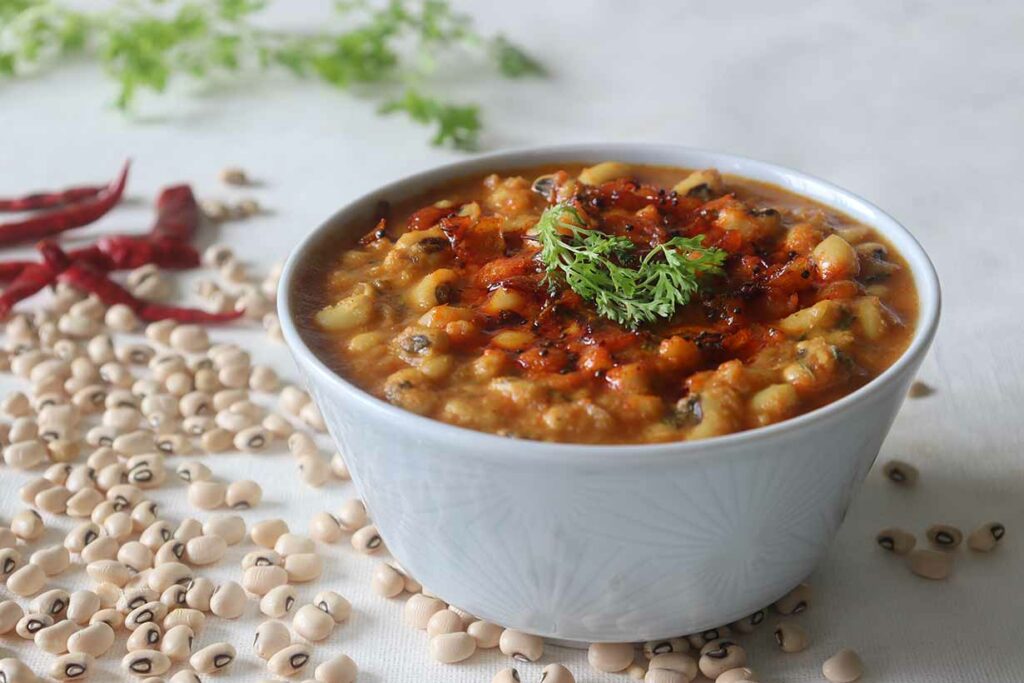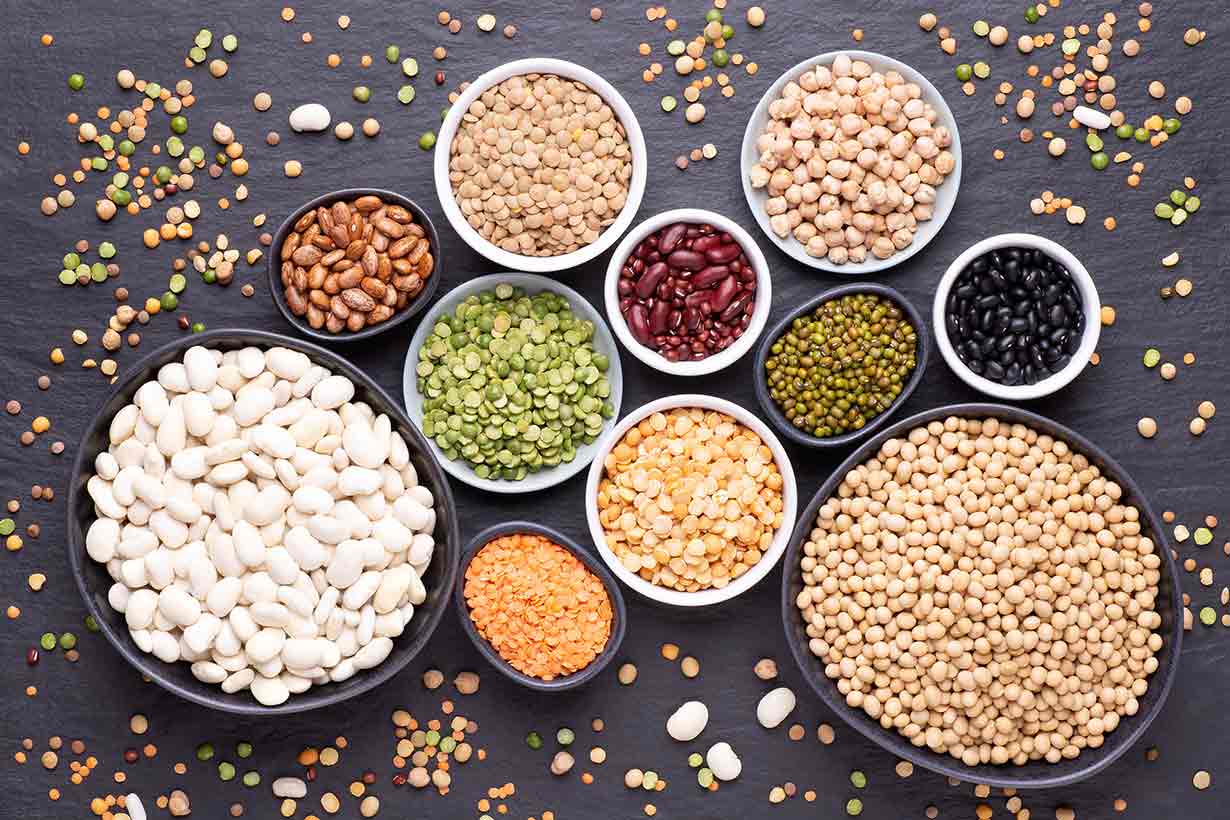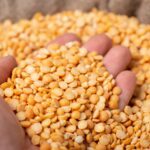The black-eyed pea is a bean with some interesting nutritional properties.
Among these, black-eyed peas provide a wide range of nutrients and may have some beneficial health effects.
This article looks at the nutritional values, benefits, and potential downsides of black-eyed peas.

Table of contents
- What Are Black-Eyed Peas?
- Nutrition Facts
- Black-Eyed Peas Contain Polyphenols and Peptides
- Black-Eyed Peas Have a Low Glycemic Index
- Black-Eyed Pea Protein May Lower LDL Cholesterol and Apolipoprotein B Levels
- Black-Eyed Peas and Blood Pressure
- Rich Source of Fiber and Protein
- Potential Downsides of Black-Eyed Peas
- How To Cook Black-Eyed Peas
- Final Thoughts
What Are Black-Eyed Peas?
Before we look at their nutritional properties, let’s first summarize what black-eyed peas are.
Black-eyed peas are a bean that belongs to the legume family (Fabaceae). Legumes are a large group of foods that includes beans and lentils.
Regarding their appearance, they are equivalent to a red kidney bean in size and somewhat similar in shape.
The name ‘black-eyed pea’ comes from the eye-like circular pattern on the bean, which is usually black but can vary in color.
Black-eyed peas are available in two different forms:
- Fresh black-eyed peas have a pale green appearance with an eye-like black pattern in the middle. They have a fresh and earthy taste. The fresh variety of black-eyed peas are also available frozen in bags.
- Dried black-eyed peas have a beige to brown shade of color and they also have the ‘black eye’ pattern in the middle. Regarding flavor, they are milder than the fresh variety and have a soft and starchy texture. Dried black-eyed peas need about one hour of cooking time, but they are available pre-cooked in cans.
Black-eyed peas are also known as cowpeas or black-eyed beans, and they have the scientific name of Vigna unguiculata.
It is thought that black-eyed peas originated in West-Central Africa. However, they grow throughout the world (1).
Nutrition Facts
Since dried black-eyed peas are the most common, here are the nutritional values for the dried beans.
The following data shows the nutritional values for one cup (171g) of cooked black-eyed peas. The source for all nutrition data is the USDA’s FoodData Central database (2).
Additionally, all daily values are calculated using USDA data and the FDA’s published daily values (3).
| Name | Amount | % Daily Value |
| Calories | 198 kcal | |
| Carbohydrates | 35.6g | 13% DV |
| Fiber | 11.1g | 40% DV |
| Sugars | 5.64g | |
| Fat | 0.91g | 1% DV |
| Saturated | 0.24g | 1% DV |
| Monounsaturated | 0.08g | |
| Polyunsaturated | 0.39g | |
| Omega-3 | 0.14g | |
| Omega-6 | 0.25g | |
| Protein | 13.2g | 26% DV |
Vitamins
- Folate: 89% of the daily value
- Thiamin (B1): 29% DV
- Vitamin E: 16% DV
- Pantothenic acid (B5): 14% DV
- Choline: 10% DV
- Vitamin B6: 10% DV
- Riboflavin (B2): 7% DV
- Niacin (B3): 5% DV
- Vitamin C: 1% DV
- Vitamin A RAE: <1% DV
- Vitamin K: 2% DV
Minerals
- Copper: 51% DV
- Manganese: 35% DV
- Iron: 24% DV
- Magnesium: 22% DV
- Phosphorus: 21% DV
- Zinc: 20% DV
- Potassium: 10% DV
- Selenium: 8% DV
- Calcium: 3% DV
- Sodium: <1% DV
As shown, despite not offering quite as much as soybeans and lupin beans, black-eyed peas are a rich source of fiber and protein.
They also provide a good range of vitamins and minerals in high amounts.
Black-Eyed Peas Contain Polyphenols and Peptides
Black-eyed peas contain high concentrations of polyphenols, chemical compounds found in plants that exert biological effects on the body.
Among these polyphenols, they are particularly rich in (3):
- Flavonols
- Flavan-3-ols
- Anthocyanins
Polyphenols have shown benefits in cell and animal studies, and they are strongly associated with benefits in human observational studies. For instance, higher polyphenol intake is inversely associated with all-cause mortality and cardiovascular mortality (4, 5, 6).
However, little is understood about the mechanisms through which polyphenols may have benefits. Therefore, further research is necessary to understand this area better (7).
Black-eyed peas also contain bioactive peptides, which are amino acid (protein) chains with bioactive properties (3).
Interestingly, research suggests that these polyphenols and peptides may have combined bioactive properties (8).
Based on cell (test tube) studies, black-eyed pea has exerted anti-cancer and anti-inflammatory effects (9, 10, 11, 12).
However, what happens in a test tube and the human body are two very different things. Furthermore, such studies often don’t pan out when tested in human trials. Thus, more research is necessary before making any strong claims regarding human health.
Black-Eyed Peas Have a Low Glycemic Index
Another potential benefit of black-eyed peas is a relatively low glycemic index (GI).
GI refers to how a particular food affects blood sugar levels (how much it increases them) after consumption.
On this note, a study that involved 40 nondiabetic participants looked at the effect that black-eyed peas had on blood glucose levels when cooked in different ways (13).
The forty participants were split into four groups of ten, each provided with 50 grams of carbohydrate from either:
- Boiled black-eyed peas
- Soaked, dehulled, ground into a paste, and steamed black-eyed peas
- Soaked, dehulled, ground into a paste, and fried black-eyed peas.
- Glucose in water
Blood samples were taken before the meal and 30, 60, 120, and 180 minutes after.
The results showed that boiled black-eyed peas had a glycemic index of 46.6, the steamed black-eyed pea paste had a GI of 50.9, and the fried version had a GI of 53.4.
A further study from 2002 found that black-eyed peas had a mean glycemic index of 42 (14).
These GI values are relatively low compared to foods like boiled white rice (GI: 66) and boiled potato (GI: 82) (15).
The glycemic load (glycemic index multiplied by the carbohydrate content of food in grams) is an important consideration for individuals, especially those with diabetes, trying to control their blood sugar levels.
Black-Eyed Pea Protein May Lower LDL Cholesterol and Apolipoprotein B Levels
LDL (low-density lipoprotein) cholesterol and apolipoprotein B (apo-B) are two cardiovascular risk markers.
Studies consistently demonstrate that as LDL-C and particularly Apo-B levels increase, the risk of cardiovascular incidence and mortality rises (16, 17, 18).
For this reason, dietary or medical interventions that can lower LDL-C levels can reduce the risk of cardiovascular disease and mortality.
Interestingly, a 2015 randomized, double-blind, crossover trial suggested that black-eyed pea protein may help to lower LDL-C levels (19).
In this trial, 38 adults with elevated LDL cholesterol levels (mean: 182.5 mg/dL) were given either 25 grams of cowpea protein isolate (in the intervention group) or 25 grams of casein daily (in the control group) for a duration of six weeks. Following the initial six weeks, there was a four-week break, after which participants switched between the intervention and control groups for an additional six weeks.
Notably, the consumption of cowpea protein led to an 18.9% reduction in LDL levels when compared to casein, as well as a 14% decrease in apoB levels over the course of six weeks (20).
Interestingly, extracts from other legumes like adzuki beans have also shown potential for lowering LDL levels (21).
It is worth noting that whole black-eyed peas and black-eyed pea protein are not quite the same things. That said, a cup of cooked black-eyed peas (171g) provides 13.2 grams of black-eyed pea protein alongside other beneficial nutrients (2).
Black-Eyed Peas and Blood Pressure
Black-eyed peas contain specific components that may potentially help to lower blood pressure.
On this note, research has demonstrated that bioactive peptides and polyphenols contained within black-eyed peas have angiotensin I-converting enzyme (ACE) inhibitory properties (22, 23).
To explain further, ACE is a hormone that plays a role in blood pressure regulation and causes vessels to restrict. Thus, anything that inhibits ACE will relax and widen blood vessels, decreasing blood pressure (24, 25).
Unfortunately, there is no direct research on whole black-eyed peas and the effect they may (or may not) have on blood pressure.
Rich Source of Fiber and Protein
One of the biggest benefits of black-eyed peas is that they contain significant amounts of both protein and fiber.
Per 171-gram cup of cooked black-eyed peas, they provide 11.1 grams of fiber and 13.2 grams of protein (2).
However, for those interested in this dual provision of both protein and fiber, borlotti beans provide even more.
Additionally, mung beans are another high-protein, high-fiber legume.
Potential Downsides of Black-Eyed Peas
As with other legumes, there are some potential downsides of black-eyed peas.
This does not mean that we shouldn’t consume them, as they are otherwise healthy and nutritious, but it is just something to be aware of.
Firstly, black-eyed peas contain several anti-nutritional factors (antinutrients) such as phytic acid. Phytic acid can bind to various minerals like magnesium and zinc, thus lowering the absorption rate for these minerals in the same meal (26).
Additionally, black-eyed peas contain various carbohydrates that belong to the oligosaccharides group. These oligosaccharides are primarily raffinose and stachyose (27).
Unfortunately, some people experience digestive discomfort to varying degrees, often presenting as bloating and flatulence, when consuming oligosaccharides. This is because humans lack the enzymes needed to digest oligosaccharides properly (28).
However, bacteria that live in the gut can digest oligosaccharides.
Therefore, oligosaccharides pass through the small intestine to the large intestine (colon), where gut bacteria ferment them. The resulting gases released from their fermentation can cause these digestive discomfort issues (29).
Individual variation exists between people, and some people may notice these issues while others may not.
Soaking Lowers Oligosaccharide Content
For those who experience digestive issues with black-eyed peas, soaking them before cooking may help.
For example, one study measured the oligosaccharide content of nine different black-eyed pea varieties.
The researchers tested the oligosaccharide levels before and after soaking the beans for 12 hours and then cooking them. The findings were as shown in the following table (30):
| Oligosaccharide Name | Content In Raw Black-eyed Peas | Content After 12 hours soaking and 30 mins cooking |
| Raffinose | 0.71 – 6.86% | 0.04 – 0.20% |
| Stachyose | 2.38 – 3.87% | 0.12 – 0.72% |
The table clearly shows that soaking and cooking black-eyed peas significantly reduces the oligosaccharide content.
How To Cook Black-Eyed Peas
The process for cooking black-eyed peas will depend on whether the beans are dried or canned and whether they have been soaked.
After bringing water to a boil, cooking dried black-eyed peas from scratch will take approximately 60-75 minutes.
If the beans have been pre-soaked, it may take anything from 30-60 minutes to cook them, depending on the soaking time.
However, canned black-eyed peas have been pre-cooked and should only take around 5 minutes to reheat them on the hob at moderate heat.
How To Use Them
There are many different ways to use black-eyed peas, and these can include:
- Add them to curries, soups and stews
- Use pre-cooked beans in stir-fries
- Add to casseroles and salads
- Make black-eyed pea hummus
Final Thoughts
Legumes typically offer many nutritional benefits, and black-eyed peas are no different.
These little beans are a rich source of fiber, protein, vitamins, and minerals.
Most interestingly, they may also have health-protective properties beyond their nutrient profile.








